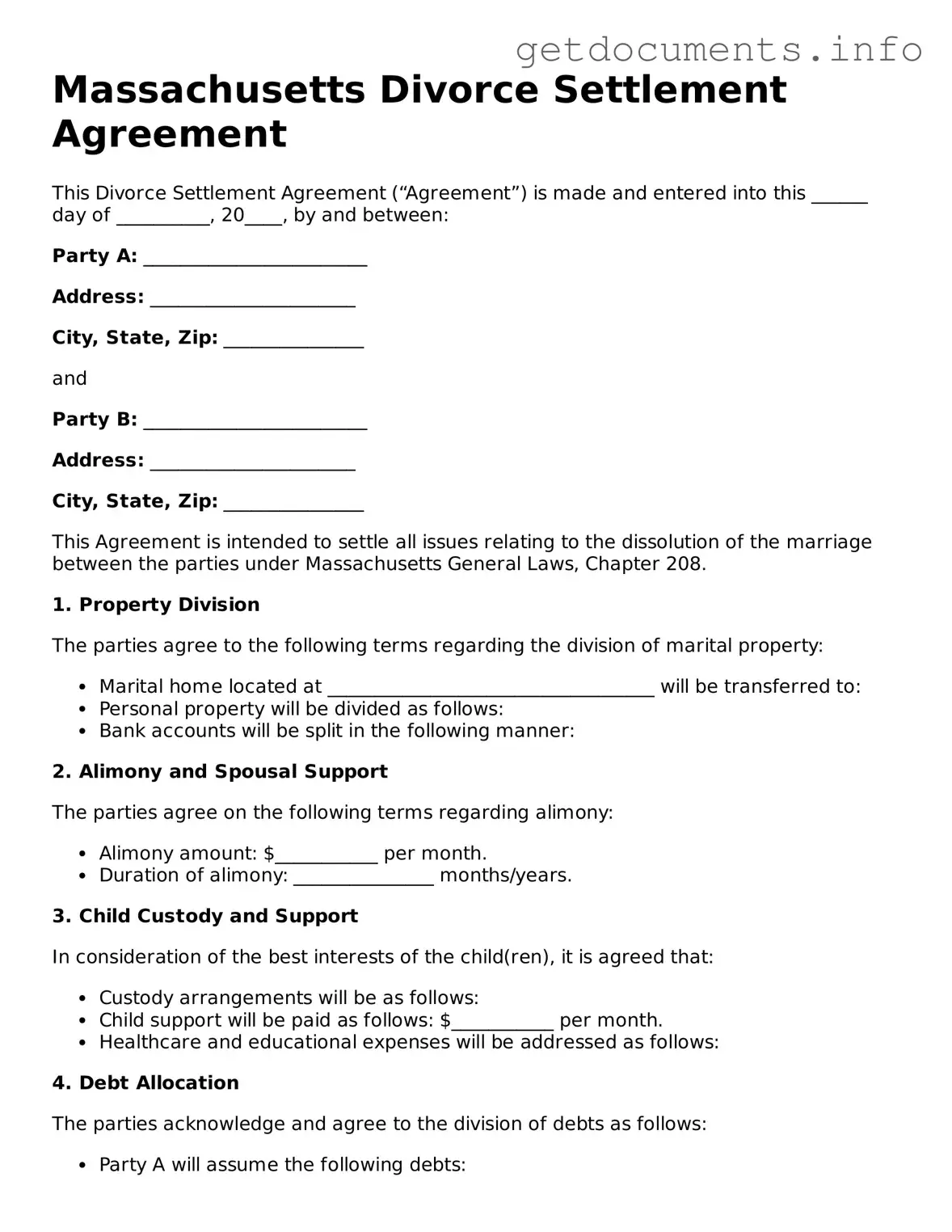Free Divorce Settlement Agreement Template for Massachusetts
The Massachusetts Divorce Settlement Agreement form is a crucial document that outlines the terms of a divorce between spouses. It covers various aspects such as asset division, child custody, and support arrangements, ensuring that both parties are in agreement before finalizing the divorce. Understanding this form is essential for a smooth and fair separation process.
Ready to take the next step? Fill out the form by clicking the button below.
Access Divorce Settlement Agreement Editor
